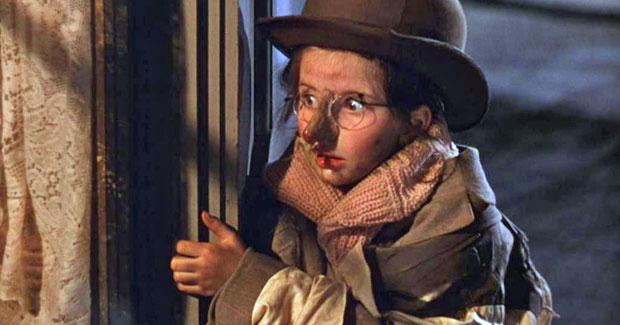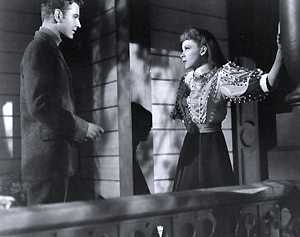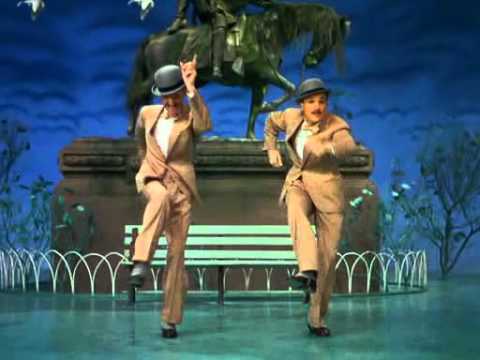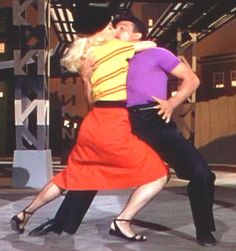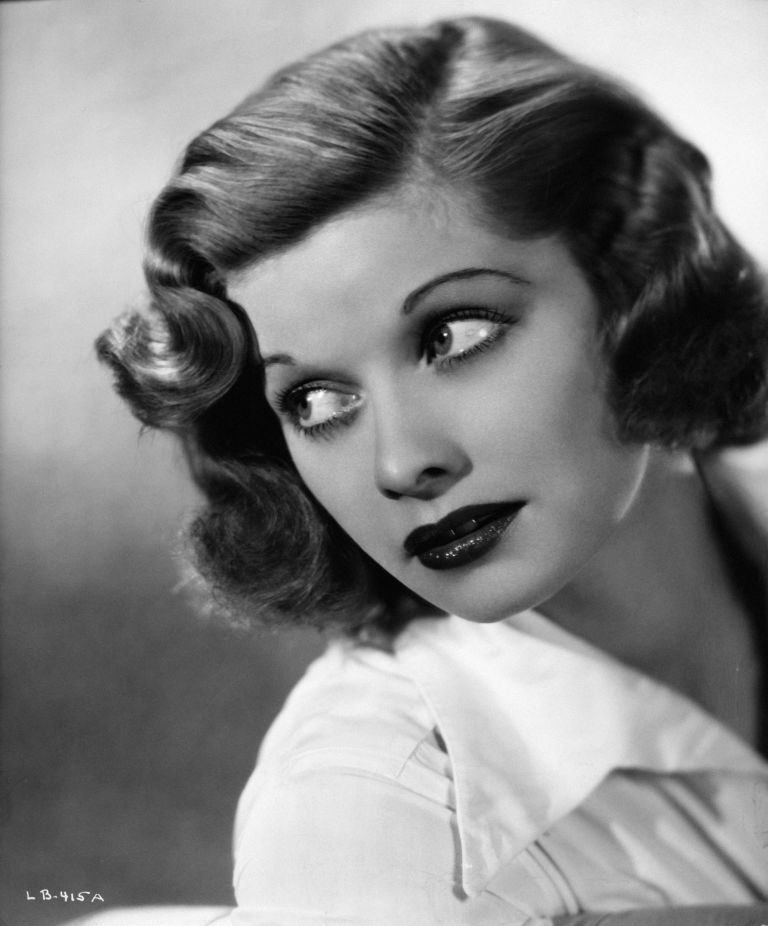For the this blogathon, bloggers were asked to write about movies featuring intruders. However, in this case, an intruder is not a criminal. An intruder is a person who may have entered someone’s life uninvited, but ultimately their presence lends to an improvement for everyone they meet. Often in these films, the intruder is either a supernatural being, or an alien, or simply a visitor from another town. Perhaps one of the all-time greatest films that fits this motif is The Wizard of Oz (1939).

Because almost everyone has seen The Wizard of Oz, I don’t think an extensive plot summary is necessary. For the three people in the world who haven’t seen this film, it features a young girl, Dorothy Gale (Judy Garland) who resides on a depressing, dusty farm in Kansas. At the beginning of the film, she has a run-in with her mean neighbor, Almira Gulch (Margaret Hamilton), who claims that Dorothy’s dog Toto (Terry) bit her. Almira angrily confronts Dorothy’s guardians, her Auntie Em (Clara Blandick) and Uncle Henry (Charley Grapewin), and demands that Toto be handed over so she can have him destroyed. Henry reluctantly hands Toto over.
Because this is a happy film and having a young girl’s pet killed would be horribly depressing, Toto escapes. Auntie Em encourages Dorothy to take Toto somewhere where they can’t get into any trouble. This serves as the impetus for Judy Garland to sing what is perhaps the most famous movie song ever, “Over the Rainbow.” Later, in an effort to save Toto, Dorothy runs away. A tornado suddenly hits. Dorothy rushes back home and is unable to open the locked storm shelter. She seeks refuge in her house where she’s knocked unconscious by debris. When Dorothy awakens, she’s inside her home, but up in the cyclone. When she lands, she discovers that she is now in the Technicolor world of Oz. The scene of a sepia toned Dorothy stepping into the color saturated world of Oz is one of the most iconic scenes in film history.

Soon Dorothy is greeted by Glinda, the alleged Good Witch of the North (Billie Burke). I maintain that Glinda is the true villain of the story. Glinda explains to Dorothy that she has killed the Wicked Witch of the East when her house landed, crushing the witch. The inhabitants of the land, the Munchkins (who I maintain are far creepier than the flying monkeys) rejoice and celebrate Dorothy killing the witch. Suddenly, the witch’s sister, The Wicked Witch of the West (Hamilton) appears, wanting to know who killed her sister, and to obtain possession of her sister’s ruby slippers. Glinda intervenes, placing the ruby slippers on Dorothy’s feet. Dorothy inquires about returning home and Glinda tells her only one person will be able to help her–The Wizard. The Wizard resides in the Emerald City. “Just follow the yellow brick road,” Glinda says.

While skipping down the yellow brick road, Dorothy encounters three new friends, all with their own dream. She invites each new friend to join her in her journey to the Emerald City to meet The Wizard, assuming that if he can help her, surely he can help them. The first person Dorothy encounters is The Scarecrow (Ray Bolger), who desperately wants a brain. Later, the Scarecrow and Dorothy come across a rusted Tin Man (Jack Haley). After oiling his joints, the Tin Man explains that he wants a heart. He joins Scarecrow and Dorothy. Later, the trio meet a lion in the woods. However, he’s afraid of everything, and is known as the Cowardly Lion (Bert Lahr). The lion desperately wants courage, so he can live up to his title of “King of the Forest.” Eventually they reach Emerald City and speak with The Wizard.
In The Wizard of Oz, the three main characters Dorothy encounters (Scarecrow, Tin Man, and the Cowardly Lion) are literally wasting away in Oz. The scarecrow is nailed to a post. The Tin Man is rusted, and the lion is cowering in fear. Dorothy’s determination to get to Oz to find a way back to Kansas gives them the motivation to try and achieve their dreams as well. Plus, it is easy to see that they may have also wanted to protect this young girl from the Witch while she makes this journey. Through their journey, the quartet becomes close friends and are determined to make each other’s dreams come true.

In the third act of the film, Dorothy is kidnapped by the Wicked Witch of the West and held captive. It is up to the Scarecrow, the Tin Man, and the Cowardly Lion to save Dorothy. The three work together and come up with a plan to sneak into the Witch’s castle and find their friend. This is important as it shows (and proves the Wizard’s point) that they always had the qualities that they’re seeking and were it not for Dorothy, they would have never made this discovery. The Scarecrow uses his intellect to figure out how to save Dorothy. The Tin Man’s heart and affection for Dorothy is what motivates him to save her. The lion wasn’t cowardly at all. Because he cared about Dorothy, he summoned up the courage to break into the Witch’s castle to save his friend.
One person in the film film who isn’t helped by Dorothy’s intrusion is The Wizard, whose scam in the Emerald City is ruined by Toto. Out of guilt, he is planning to leave Oz and escort Dorothy home personally, as he too is from Kansas. Then, the Wicked Witch of the East and West definitely did not benefit from Dorothy’s intrusion. The Wicked Witch of the East was literally crushed to death by Dorothy’s intrusion. The Wicked Witch of the West was “liquidated” by Dorothy when she threw a bucket of water in the Witch’s direction, trying to save Scarecrow whose straw body was on fire. However, Dorothy melting the witch led to the salvation of the flying monkeys and the castle guards, who were literally hailing Dorothy for freeing them.

As for Glinda, she is the true scum of this film. Despite her fun floaty pink bubble and her billowing pink sparkly dress, Glinda sucks. First, she puts Dorothy into this dangerous situation by stealing the ruby slippers and placing them on her feet, even though legally as the next of kin, they should have gone to the Wicked Witch of the West. Then, she forces Dorothy to take some dangerous journey to the Emerald City in hopes of getting home, knowing damn well that the Wizard won’t help her. At the end of the film, Glinda tells Dorothy that she had the power to get home the entire time. When asked why she didn’t just tell her that, Glinda glibly responds, “you wouldn’t have believed me.” Dorothy was poisoned, kidnapped and nearly killed by the Wicked Witch, but yes, let’s not tell her how to get home. Thanks Glinda. She’s an intruder that leaves nothing but chaos in her wake.



























